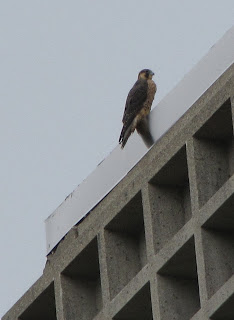
Thanks to my friend Steve Gingold I have had the pleasure of visiting the High Ledges Wildlife Sanctuary on two occasions so far this year. The refuge is located just outside of Shelburne Falls in Franklin County, Massachusetts and operated by the Massachusetts Audubon Society (“Mass Audubon” as they call it here). It is a property rich in both history and natural history.
Dr. Ellsworth “Dutch” Barnard grew up on the family farm established here in 1790. Portions of that property were included in the original 400 acres donated to Mass Audubon. Dutch taught English from 1930-1933 at what was then Massachusetts State College. He would return after decades of other professorial positions to teach at UMass from 1968-1973. He and his wife Mary spent the summers in a rustic cabin at the summit of the “Ledges” for more than fifty years. The cabin burned down a few years ago, but the chimney and a couple rock walls remain. Here is the view they enjoyed of the Deerfield River valley:

Dutch and Mary didn’t take it easy, either. They actively constructed the trails that are maintained to this day, and also identified the many plants and animals that call the sanctuary home. Twenty orchid species are known from the nearly 600 acres now encompassed by the boundaries of the reserve, and thirty species of ferns have been found there as well. I confess I didn’t even know there were that many kinds of ferns.
I saw my first pink lady’s slipper orchid there on our first trip, June 6, and this brilliant wood lily on July 11:

If you can’t visit the area yourself, and I highly recommend it, consider reading Ellsworth Barnard’s book In a Wild Place: A Natural History of High Ledges, illustrated by Charles H. Joslin, and published by the Massachusetts Audubon Society in 1998. You can also see some of Steve’s magnificent nature images from High Ledges and elsewhere at his photography website here. Thank you, Steve, for the transportation and sharing your special places with me.



